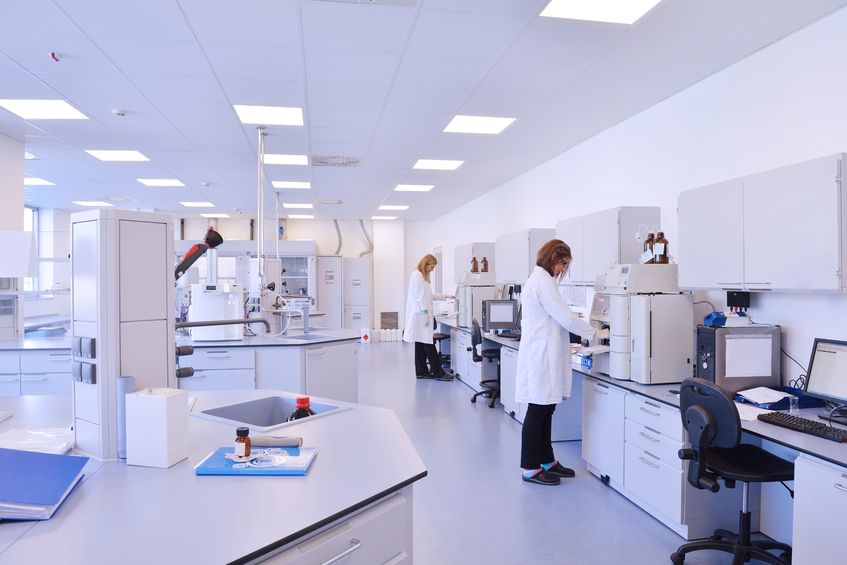 Christina Glantschnig
Christina Glantschnig
Whether you’ve just moved your lab into a new building, a new country, or are starting your own group or lab for the first time, setting up the work space for wet lab scientists from scratch can be a daunting endeavor. In keeping with the expression “May you live in interesting times,” I’ve been privileged to experience the process of setting up a brand-new molecular biology lab from scratch—in a new building that had only just been equipped for that purpose. Our institute had dissolved and I, the lone remaining PhD student, was tasked with transferring the essentials of our old group to the new lab in a different country, where we would merge with several other groups into an institute bigger than any in which I’d ever worked. Additionally, I was asked to help brainstorm, create, and edit lists and plans for setting up the lab and budgeting for essential lab equipment, which was a huge learning experience. If you are facing a similar challenge, I hope my lists below will help you jumpstart the process.
Necessary core equipment to start a generic molecular biology lab
The following equipment suggestions and numbers are based on an estimated 15 scientists starting work in the wet lab within the first year. These are the bare-minimum quantities and can definitely be improved upon. The list is also meant as a prompt to spark your own ideas, and is by no means comprehensive. Devices marked with an asterisk* do not necessarily scale up linearly—i.e. twice the number of scientists might still not need more of this type of equipment.
| Cell culture (per biosafety level) | |
| Laminar flow hoods* | 2 |
| CO2 Incubators* | 2 |
| Microscope* | 1 |
| Freezer -20°C | 1-2 |
| Fridge | 1-2 |
| Tabletop cooling centrifuge for bigger volumes and plates | 1 |
| Mini centrifuge for 1.5-2ml vials | 1 |
| Waterbath* | 1 |
| Pumps to suck off medium, etc* | 2 |
| Cell counter (automated or manual)* | 1 |
| Camera for microscope* | 1 |
| Molecular biology | |
| PCR machines | 1-2 |
| RT-qPCR machines | 1-2 |
| Sonicator* | 1 |
| Pipettes | 1 set per bench space |
| Scales | 1 normal, 1 micro scale |
| Chambers & power supplies for agarose gels | 2 |
| Agarose (DNA, RNA) gel imaging machine | 1 |
| Western blot imaging machine or film development equipment | 1 |
| Dark room* | 1 |
| Cold room* | 1 |
| Vortex shaker | 1 per 4 bench spots |
| Thermoblock | 1 per 4 bench spots |
| 1.5-2ml cooling centrifuge | 1 |
| 1.5-2ml centrifuge | 1 |
| 50ml+/plate centrifuge (exchangeable rotors) | 1 |
| Rotating shaker for Western blots/other incubations | 1-2 (one at RT, one in cold room) |
| Rotating wheel (optional, for IPs, etc) | 1 |
| Liquid nitrogen dewar | 1 |
| Timers | 1 per scientist |
| Eppendorf racks | TBD (varies greatly by lab) |
| Glassware | TBD (varies greatly by lab) |
| Bunsen burner | 1 per 4 bench spots |
| Spray bottles for ethanol, etc | 2 per 4 bench spots |
| Stirring bars | TBD (varies greatly by lab) |
| Heated magnetic stirrer | 1 |
| Heat sealer for blots, etc* | 1 |
| Multi-dispensing pipette | 1 |
| Nanodrop for RNA/DNA quantification* | 1 |
| N2 cell storage system* | 1 |
| -80°C freezer* | 1 |
| Biochemistry | |
| Western blot gel chambers + power supply | 2 |
| Western blot transfer device + chamber | 2 |
| Tissue pulverizer (e.g. Quiagen TissueLyser(R) or UltraTurrax)* | 1 |
| Plate reader (luminescence, fluorescence, colorimetric assays)* | 1 |
| pH meter | 1 |
| Ultracentrifuge, if needed* | 1 |
Now that the basics are established, you might wonder how to decide on equipment when you’re not sure how many scientists will eventually work in the lab. This is an important question, but here's my approach: There are certain basics (mostly listed above) that any number of scientists will need access to in order to work effectively—be it five or 15. If you have an expected range (e.g. 3-8, 10-20, or 30+) that will start work in your lab within the next 1-2 years, you can approximate how many sets of the basic equipment will be needed. Additionally, you can still adjust equipment that’s more closely dependent on exactly how many people are working in the lab—for example, pipette sets or glassware—as you go along, so be sure to include a buffer in your budget plan for these purposes. Lastly, you have a given lab space to work with, which puts an upper limit on the number of bench spots you have available. This should allow you to make your estimate more precise.
The most crucial thing to keep in mind when setting up a new lab is the inevitable existence of “unknown unknowns”—i.e. problems, unforeseen circumstances, or arising questions that are impossible to plan for from the start, since they will only unfold over time. Reserve some buffer, be it administrative or budgetary, to deal with the unexpected, and observe how work in your lab unfolds, all the while determining which processes create bottlenecks and need optimization. For more inspiration in this regard, I recommend you read “Antifragile” by Nassim Taleb.
It is also critical that you examine what specialty devices you will need for your specific lab purpose. Examples include: confocal microscope, oxygen consumption measurement device, calorimetric system, mouse metabolic cage system, FACS for cell sorting, etc. These instruments will take up huge parts of your budget and lab space, and often have specific setup requirements that you’ll need to consider.
When it comes to safety, it is advisable to inform yourself in the earliest stages of setting up your lab about the local, institutional, or company regulations for fire, biological, and chemical safety. It’s a huge pain to shift around big instruments—such as bulky centrifuges or freezers—once everything is installed, just because you realize afterward that their placement does not comply with safety laws. In the worst case, failure to adhere to regulations or conform to feedback by inspectors may lead to shutdown of your lab, so it’s better to accept this part of lab setup as labor pain and get it over with quickly.
Here’s my general advice: plan as best you can, then breathe, watch, and adjust as the process unfolds. Setting up a lab from scratch can be daunting, especially if it’s your first time doing so. But in the end, combined with mindfulness, curiosity, and a desire to learn and optimize, it can be an enjoyable process—and you may just end up with the laboratory of your dreams!
Quartzy is the world’s No. 1 lab management platform. We help scientists easily organize orders, manage inventory, and save money. We’re free and always will be. Visit Quartzy.com or reach out at info@quartzy.com.
Interested in writing for The Q? Send us an email!
Share this:

Christina Glantschnig
I'm a late stage PhD student focusing on metabolism in health and disease. Currently I'm working on non-coding RNAs in the context of fat cell development and endocrinology. In my free time, I'm an amateur psychologist experimenting in operant conditioning on my willing, food-loving Akita dog, Kaya.
